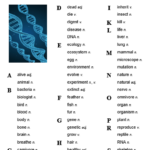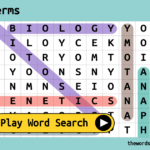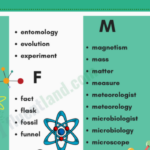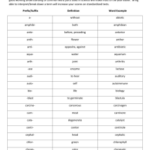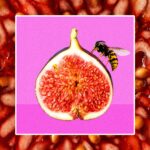Biology Words That Start With P
1. Photosynthesis
2. Phylum
3. Prokaryote
4. Protein
5. Polymerase
6. Plasma membrane
7. Pigment
8. Pollination
9. Plasmid
10. Polyploid
11. Parthenogenesis
12. Phagocytosis
13. Polypeptide
14. Peroxisome
15. Phylogenetics
16. Protoplasm
17. Parasite
18. Polygenic
19. Pseudopod
20. Pathogen
21. Pluripotent
22. Pancreas
23. Pheromone
24. Protoplasmic fusion
25. Prion
26. Pedigree
27. Protist
28. Phloem
29. Permeability
30. Prophase
More About Biology Words That Start With P
Welcome to another exciting edition of our biology series, where we explore the fascinating world of living organisms, their characteristics, and their intricate connections with the environment. Today, we dive into the realm of biology words that begin with the letter “P,” shedding light on concepts that are both educational and captivating.
The study of biology encompasses an astounding range of topics, from the tiniest microorganisms to massive ecosystems that span continents. It is a science that constantly evolves as new discoveries are made, pushing the boundaries of our understanding of life itself. At the heart of this vast field lies an extensive vocabulary, comprising words that hold the key to unlocking the mysteries of existence.
Starting off our exploration with the letter “P,” we encounter an array of captivating terms that denote various biological phenomena. Let’s begin with “photosynthesis,” a fundamental process undertaken by plants and some microorganisms that allows them to convert light energy into chemical energy, ultimately producing oxygen and carbohydrates as byproducts. This mechanism forms the foundation of life on Earth, as it provides the energy required to sustain the diverse biosphere.
Moving on, we encounter the concept of “proteins,” which are essential macromolecules found in all living cells. These molecules are composed of amino acids and perform myriad functions, including structural support, transportation, catalysis, and defense mechanisms. Proteins serve as the building blocks of life and are integral to the proper functioning of cells, tissues, and organs.
Another intriguing term beginning with “P” is “population genetics.” This field of study explores the distribution and frequency of genetic variations within populations and how they change over time. By understanding population genetics, scientists can gain insight into evolutionary processes, adaptation, and the genetic factors that influence the health and survival of species.
Branching out further, we encounter the fascinating world of “pharmacology.” This interdisciplinary field investigates the effects of drugs on living systems, ranging from humans to animals and plants. Pharmacological research plays a critical role in developing therapeutics, understanding drug interactions, and ensuring the safe and effective use of medications for various conditions, including disease prevention and treatment.
Steering toward the microscopic, we discover the term “pathogens.” These are microscopic organisms, such as bacteria, viruses, fungi, and parasites, that can cause diseases in their hosts. Understanding the inner workings of pathogens is crucial for devising strategies to combat infectious diseases, develop vaccines, and improve public health around the world.
The letter “P” in biology also introduces us to “predation,” a vital ecological interaction wherein one organism, known as the predator, captures and feeds on another organism, the prey. This dynamic relationship exerts a significant influence on population dynamics, community structure, and even the evolution of species. Studying predation sheds light on the delicate balance that exists within ecosystems, highlighting the interconnectedness of organisms and the importance of biodiversity.
These are just a few examples of the captivating biology words that begin with the letter “P.” By delving into these concepts, we embark on a journey through the intricate web of life, gaining a deeper appreciation for the marvelous tapestry of biological diversity.
Stay tuned for our upcoming articles, where we will continue to explore the fascinating world of biology, uncovering more captivating terms that enrich our understanding of the living world. We hope you find our discussions educational and enjoyable, sparking curiosity and fostering a deeper appreciation for the wonders of biology.
Biology Words That Start With P FAQs:
FAQ: Biology Words that Start with P
Q1: What is photosynthesis?
A1: Photosynthesis is the process by which green plants, algae, and some bacteria convert sunlight, water, and carbon dioxide into glucose (energy) and oxygen.
Q2: What is a population?
A2: In biology, a population refers to a group of individuals of the same species living in a specific area at a given time.
Q3: What is a parasite?
A3: A parasite is an organism that lives on or inside another organism (host), from which it obtains nutrients and often causes harm to the host.
Q4: What is pollination?
A4: Pollination is the transfer of pollen grains from the male part (stamen) of a flower to the female part (pistil), which enables fertilization and the production of seeds.
Q5: What are pathogens?
A5: Pathogens are disease-causing microorganisms, such as bacteria, viruses, fungi, or parasites, that can infect and harm humans, animals, or plants.
Q6: What is a pedigree?
A6: In genetics, a pedigree is a diagram that presents the genetic relationships and inheritance patterns of a specific trait or condition within a family.
Q7: What is the function of the pancreas?
A7: The pancreas is an organ that produces digestive enzymes and insulin, which regulates blood sugar levels in the body.
Q8: What is a prey?
A8: A prey refers to an animal that is hunted and killed by another animal (predator) for food.
Q9: What are pathogens?
A9: Pathogens are disease-causing microorganisms, such as bacteria, viruses, fungi, or parasites, that can infect and harm humans, animals, or plants.
Q10: What is a Punnett square?
A10: A Punnett square is a simple grid used to predict the possible genotypes and phenotypes of offspring resulting from a genetic cross between two individuals.






